Sustainable and Inclusive Design for the Bathroom Space
SWASH is aimed at improving the lives of people with physical disabilities and a focus on the ageing population, whilst also considering water consumption and reducing waste water. With life expectancy's continuing to rise an increasing number of elderly patients are being treated each year for falls and scald injuries associated with the use of the bathroom space. This concept is designed to provide stability in moving around the bathroom and standing while using the basin to prevent falls with users who may find it difficult to walk, stand or maintain balance. It is designed to allow for easy control and indication of water temperature to prevent scald injuries. It is also designed for accessibility for users who may have physical disabilities and require a wheelchair, and for users who may not need any extra support or assistance at all, as it will still provide the usual wash basin experience. My main aim with this project was to design a new wash basin system that provided discreet but effective assistance for those who need it most, increasing confidence in the users who may find it dispiriting to use accessories such as grab bars and other dexterity attachments.
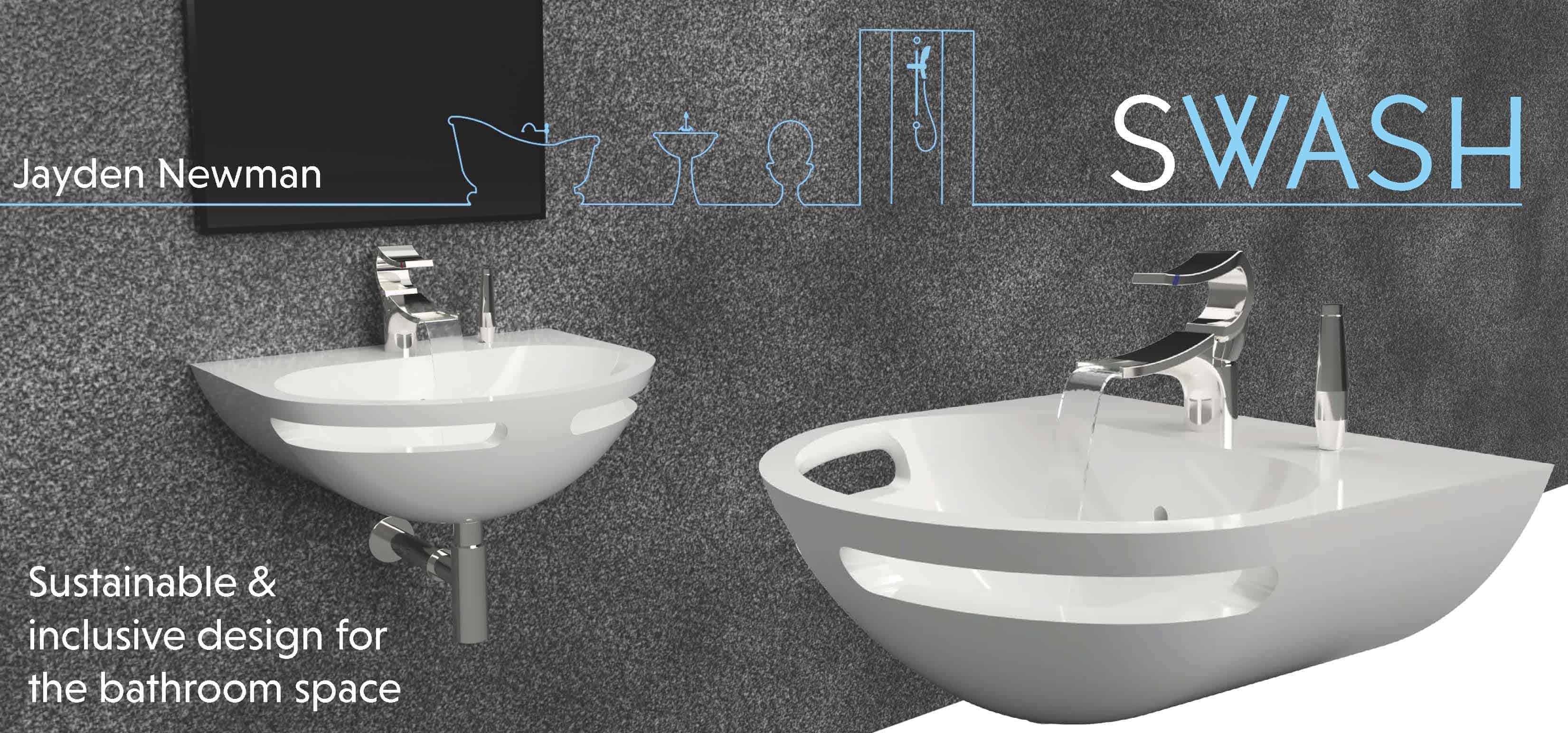

I had to choose my own brief for this project and I decided to look at current competition briefs. I found one called 'jumpthegap' an international competition promoted by Roca and supported by Barcelona Design Centre. They were asking for sustainable and innovative concepts for the bathroom space. They provided a list of areas of focus for inspiration on their website, the two in which I decided to focus on were water consumption and the ageing population. While researching in to the elderly population and their use of the bathroom space it became apparent that safety was the main issue in terms of falls and scalding. Research in to water consumption allowed me to fully understand the amount that is used on a daily basis from each appliance and which uses the most. All these findings motivated the generation of ideas tackling social and environmental sustainability. After sketches and conversations I made my way from concepts just focusing on the design of a tap to including a basin and extendable hose, meaning I was able to create an entire washbasin system that was sustainable and inclusive. Designing the whole system also gave me many opportunities to think about aesthetics as I aimed for the modern white glazed and chrome finishes.

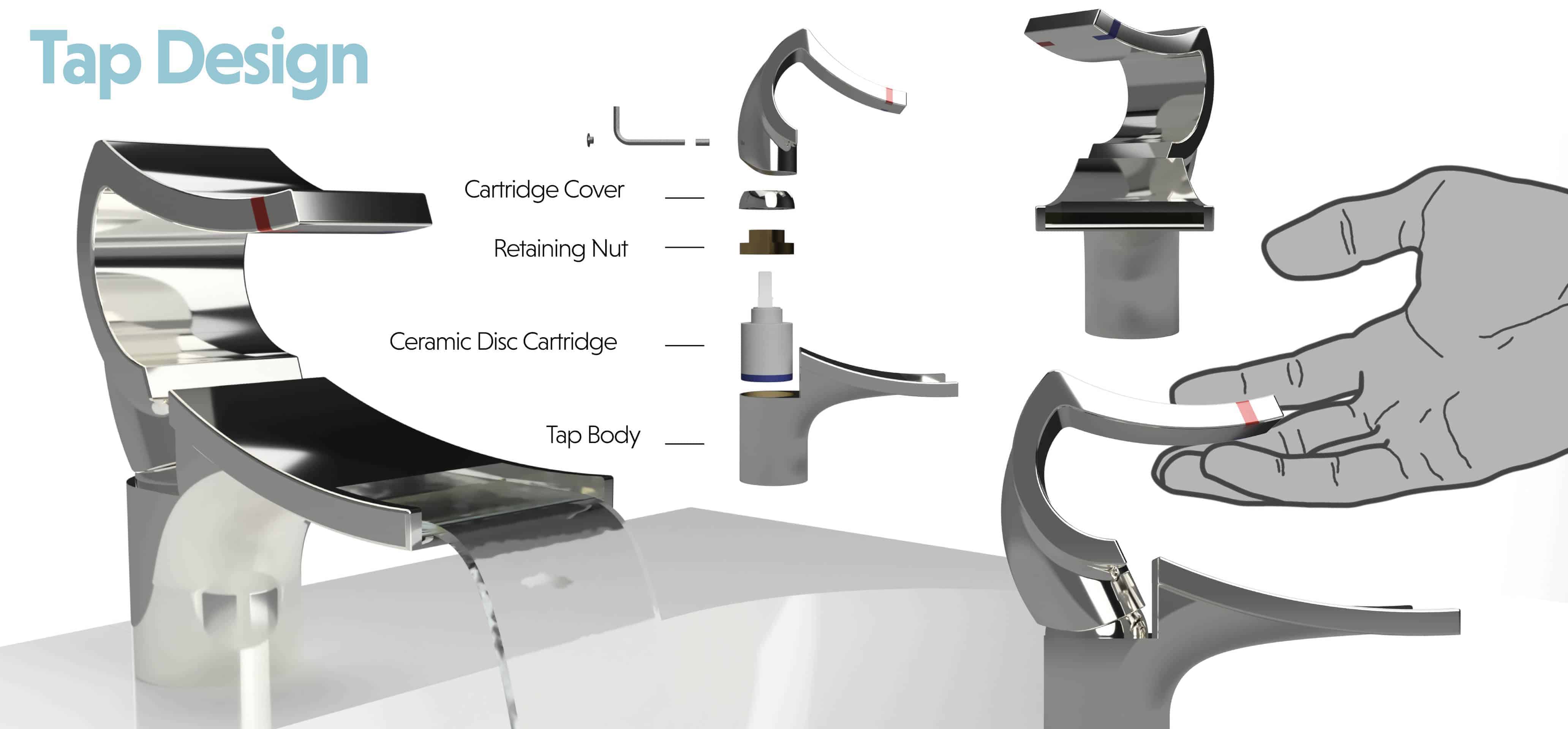
For the CAD visuals of the concept and all of its features I used Autodesk Fusion 360 software, allowing me to create high resolution renders with accurate material representation. These hugely assisted in communicating the idea and in the manufacture of my final model. I would start by creating full scale hand drawings of each part to my concept referencing to original sketches for shape and aesthetic, I would then use the dimensions of these drawings to draw the initial shapes on Fusion 360 before transforming the shape in to a 3D visual. Once I had my digital 3D object of each part I would decide on material and finishes for each part which would be the final step before creating the renders. I was then able to assemble all of the parts together to create 3D renders of the whole concept with all of its features, adding water effects and creating suitable environments around it.
The accurate CAD files of my tap and hose were what I used to machine out of resin board on a CNC milling machine, creating the exact shape and size of the parts. The basin I made by hand from 4 layers of 50mm thick Styrofoam cutting around stencils I had made referencing from my CAD model of the basin, in which I also split in to 4, to gather accurate dimensions. Using sanding tools, saws, glue and spray paint I was able to create a realistic basin shape with a convincing finish accurately representing the size and shape of what the basin would be like.
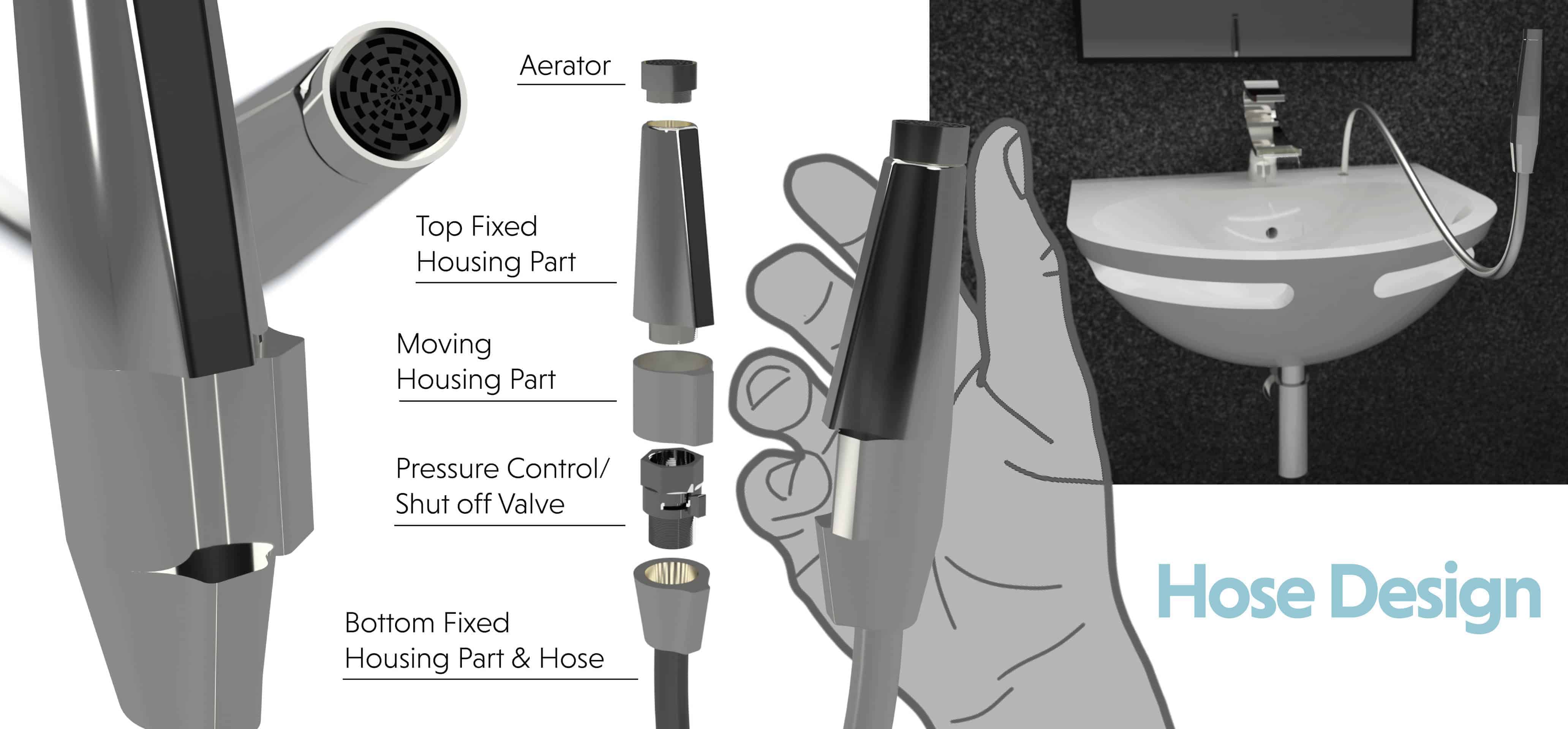
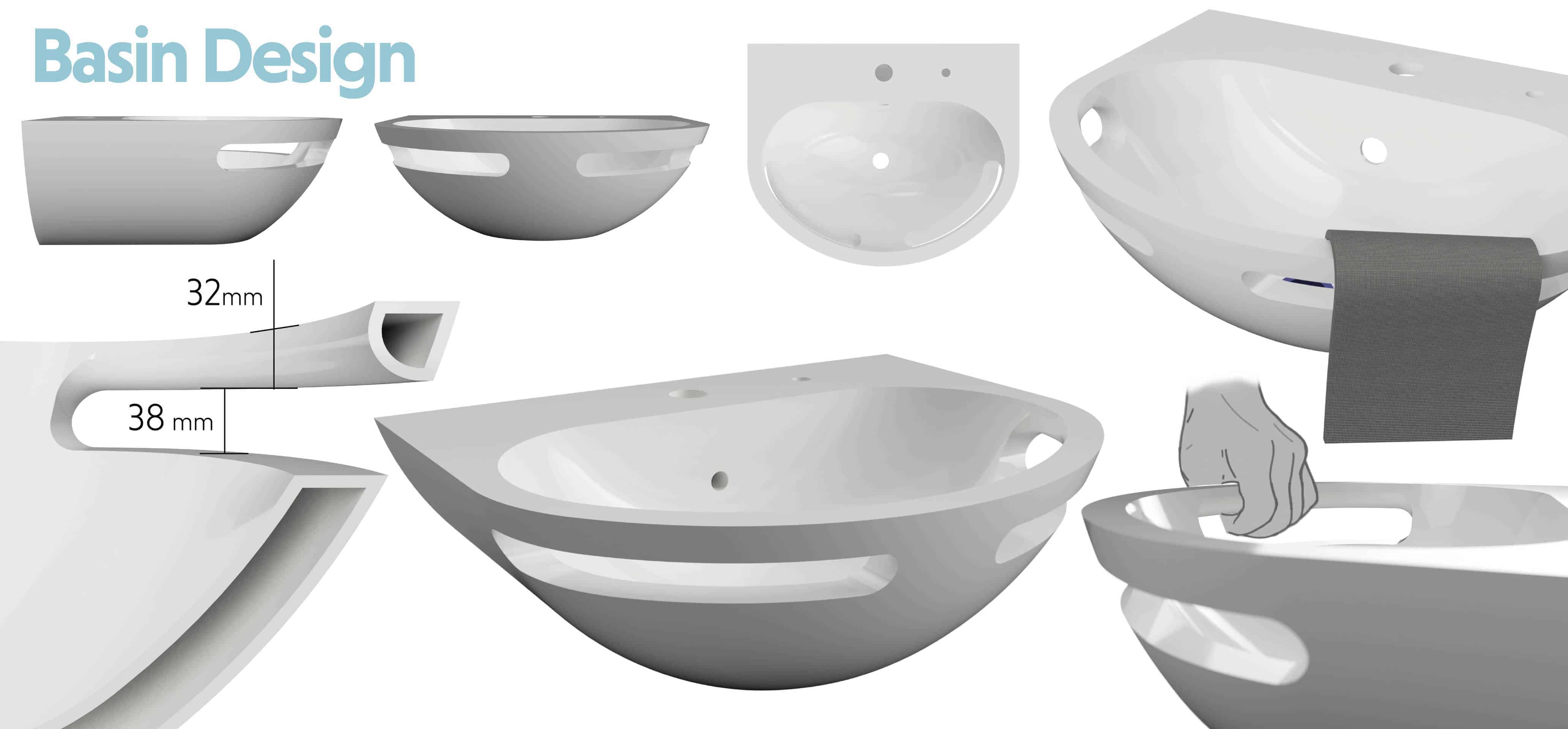
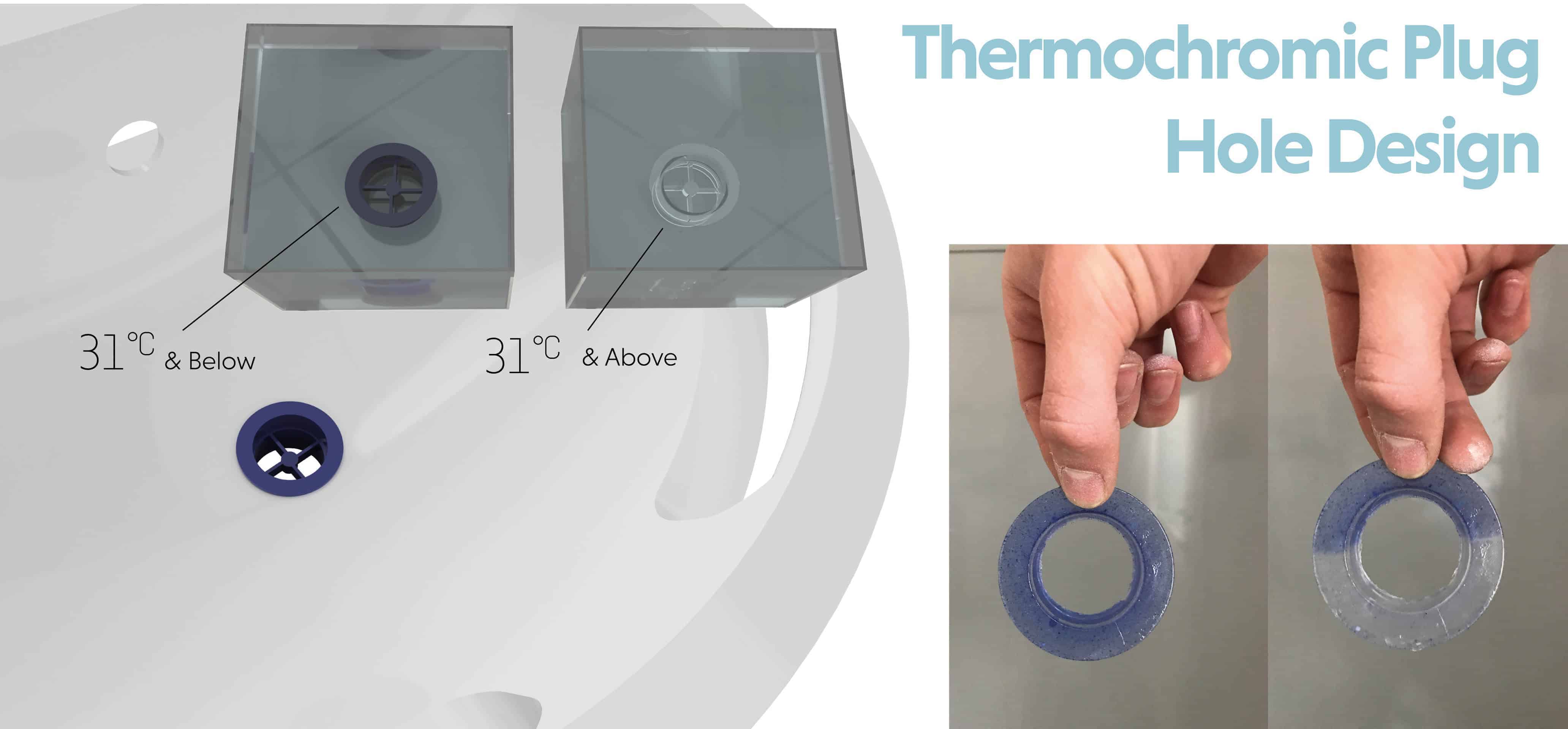
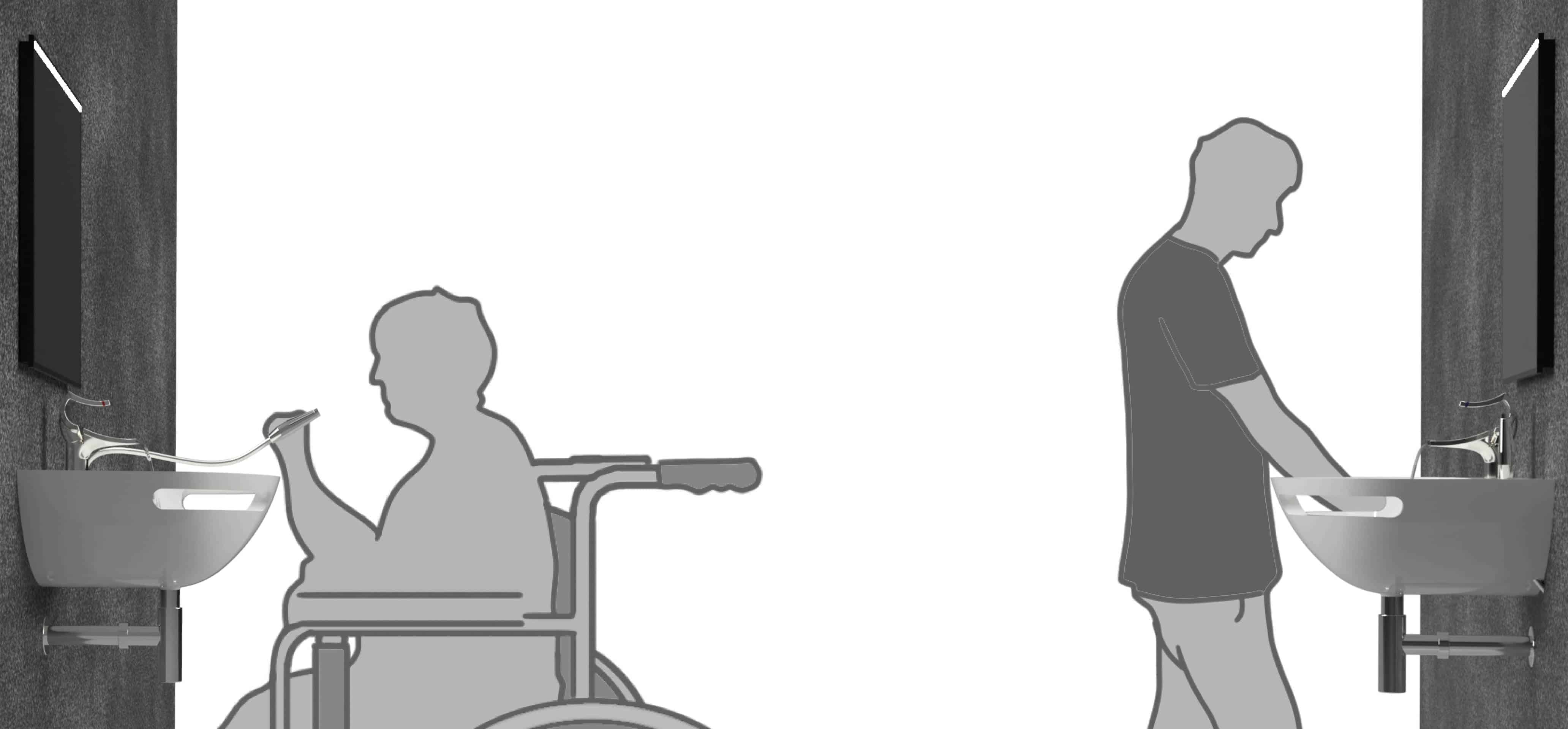

I exhibited this project in a gallery in Falmouth, I displayed my model on a stand with 5 display boards above it along with a design report book. People were very impressed with the visuals and some of the ideas that were involved in the concept, especially the thermochromic plug hole as this was something not a lot of people had seen or thought of before. The model also came across very convincing towards some people, I was caused to believe this as I returned to find a few small finger dent marks around the edge of the sink where people had squeezed a bit too hard to discover what it was made of. The main thing I learned through this project was that I gave myself almost too much work, being a university project with a deadline, as I was essentially designing 4 things at the same time to make up the whole washbasin system, the tap, the extendable hose, the plug hole and the basin. This resulted in certain areas and features being slightly underdeveloped compared to others. It was a challenging project but I was very pleased with the outcome and received a lot of positive feedback and appreciation towards the idea and outcome.